Table of contents
- 10 Most Profitable Farming Crops
- 1. Medicinal Herbs
- 2. Bamboo Farming
- 3. Saffron Cultivation
- 4. Vanilla Bean Farming
- 5. Exotic Vegetables
- 6. Floriculture (Growing Flowers)
- 7. Organic Fruits and Vegetables
- 8. Spices
- 9. Dates Farming
- 10. Turmeric Farming (Speciality Varieties)
- Conclusion
- Frequently Asked Questions (FAQs)
Are you looking to maximise your returns from farming in India in 2025? Choosing the right crop can make all the difference. With increasing demand for diverse agricultural products, certain crops stand out for their profitability. This article dives into the top 10 most profitable farming crops in India for 2025, providing you with essential details to make informed decisions.
10 Most Profitable Farming Crops
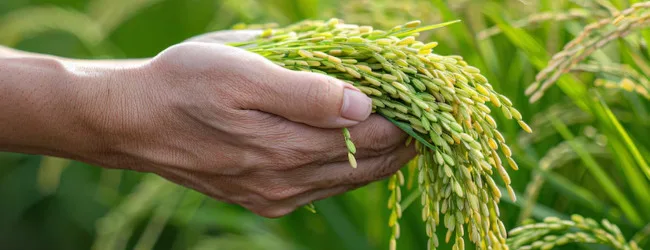
Here are the top 10 most profitable farming crops in India for 2025. Let’s explore the top contenders:
1. Medicinal Herbs
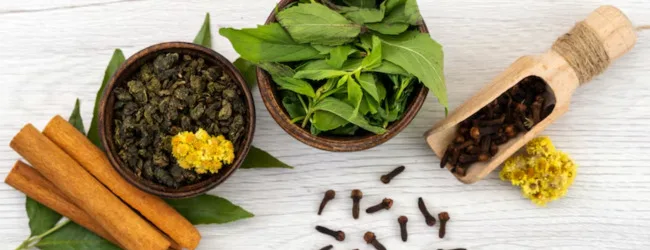
Medicinal herbs are gaining significant traction due to the growing awareness of natural healthcare and the booming Ayurvedic and pharmaceutical industries.
a. Why this Idea:
- High demand in domestic and international markets.
- Relatively lower water requirement compared to some conventional crops.
- Government support for promoting herbal cultivation.
- Potential for value addition through processing and packaging.
b. Licenses Required:
- Cultivation license from the state agriculture department.
- For selling processed herbs, licenses related to food safety and standards might be required.
- Specific licenses may be needed for exporting medicinal herbs.
c. Investment Required:
- Land preparation costs.
- Cost of quality seeds or saplings.
- Irrigation setup (can be low if water needs are minimal).
- Organic fertilisers and pesticides (if opting for organic farming).
- Harvesting and initial processing costs.
d. How to Sell:
- Directly to Ayurvedic medicine manufacturers.
- Supplying to pharmaceutical companies.
- Selling to wholesalers and retailers dealing in organic and health products.
- Online platforms and e-commerce portals.
- Establishing your own processing and branding unit.
e. Any other Requirements:
- Knowledge about the specific herb’s cultivation practices.
- Understanding of quality standards and market requirements.
- Proper storage and post-harvest management facilities.
f. Challenges in the Idea:
- Risk of crop diseases and pest attacks.
- Fluctuations in market prices.
- Need for specialised knowledge in cultivation and processing.
- Competition from established players.
g. How to overcome the Challenges:
- Adopt organic farming practices to enhance plant immunity.
- Conduct thorough market research before cultivation.
- Seek guidance from agricultural experts and research institutions.
- Form farmer producer organisations (FPOs) to improve bargaining power and access to markets.
h. Example:
A farmer cultivates Ashwagandha, a popular medicinal herb. They establish a small processing unit to dry and powder the roots. They then package it attractively and sell it directly to local Ayurvedic clinics and online through their own website, emphasising the organic and high-quality nature of their product.
2. Bamboo Farming

Bamboo is a versatile and fast-growing plant with numerous industrial and commercial applications, making its cultivation highly profitable.
a. Why this Idea:
- Rapid growth and high yield.
- Diverse applications in construction, furniture, paper, textiles, and food.
- Environmentally friendly as it helps in carbon sequestration and soil conservation.
- Government initiatives promoting bamboo cultivation and industry.
b. Licenses Required:
- Permits for harvesting and transportation may be required in some states.
- For setting up bamboo-based industries, specific industrial licenses will be necessary.
c. Investment Required:
- Cost of bamboo saplings.
- Plantation and maintenance costs.
- Irrigation setup (though bamboo is relatively drought-tolerant once established).
- Harvesting equipment and labour costs.
d. How to Sell:
- Supplying raw bamboo to paper mills and construction companies.
- Selling bamboo poles to artisans and furniture makers.
- Establishing your own bamboo processing unit for products like flooring, panels, and handicrafts.
- Exporting bamboo products.
e. Any other Requirements:
- Understanding of different bamboo species and their applications.
- Knowledge of sustainable harvesting practices.
- Potential for value addition through treatment and processing.
f. Challenges in the Idea:
- Long gestation period before the first harvest (typically 3-5 years for significant yield).
- Lack of awareness and established markets in some regions.
- Transportation challenges due to the bulkiness of bamboo.
g. How to overcome the Challenges:
- Intercropping with short-term crops during the initial years to generate income.
- Promoting the benefits and applications of bamboo in local markets.
- Investing in efficient transportation and processing technologies.
- Collaborating with industries and research institutions to develop new applications.
h. Example:
A farmer plants a large bamboo plantation. After a few years, they start harvesting mature culms and supply them to a local paper mill. Simultaneously, they establish a small workshop to create bamboo furniture and handicrafts, which they sell in local markets and online, highlighting the sustainability and unique design of their products.
3. Saffron Cultivation
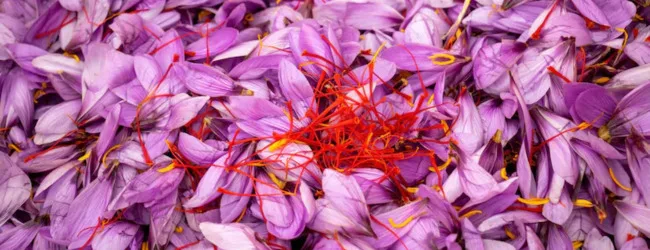
Saffron, the “golden spice,” is one of the most expensive spices in the world, offering exceptionally high returns for farmers.
a. Why this Idea:
- Extremely high market value.
- Low volume but high revenue per unit.
- Unique climatic requirements limit its cultivation to specific regions, reducing competition.
b. Licenses Required:
- Cultivation license from the state agriculture department.
- Specific licenses may be needed for selling and trading saffron.
c. Investment Required:
- Cost of high-quality saffron corms (seeds).
- Land preparation and specialised farming techniques.
- Labour-intensive harvesting and processing (hand-picking of stigmas).
- Storage and packaging to maintain quality.
d. How to Sell:
- Directly to spice traders and wholesalers.
- Supplying to gourmet food stores and restaurants.
- Selling online through specialised platforms.
- Exporting to international markets.
e. Any other Requirements:
- Specific climatic conditions (cool, dry climate with well-drained soil).
- Specialised knowledge of saffron cultivation and harvesting.
- Careful post-harvest handling to preserve the aroma and colour.
f. Challenges in the Idea:
- High initial investment for corms.
- Labour-intensive harvesting process.
- Risk of crop failure due to unfavourable weather conditions.
- Adulteration and competition from low-quality saffron.
g. How to overcome the Challenges:
- Source high-quality corms from trusted suppliers.
- Train labour in efficient harvesting and processing techniques.
- Implement protective measures against weather fluctuations.
- Focus on quality control and build a reputation for authentic saffron.
h. Example:
A farmer in a suitable region cultivates saffron using organic methods. They meticulously hand-harvest the stigmas and dry them carefully. They then package the saffron in small, attractive containers and sell it directly to high-end spice shops and online, emphasising its purity and unique flavour profile.
💡 Pro Tip: If you want to start a business but have too many doubts, connect with a business expert from Boss Wallah for guidance – https://bw1.in/1116
4. Vanilla Bean Farming

Vanilla is a highly sought-after flavouring agent, and its cultivation can be quite profitable, especially with the increasing demand for natural vanilla.
a. Why this Idea:
- High market price for quality vanilla beans.
- Growing demand from the food and fragrance industries.
- Relatively low land requirement for intensive cultivation.
b. Licenses Required:
- General agricultural cultivation license.
- For exporting vanilla beans, specific export licenses are required.
c. Investment Required:
- Cost of vanilla cuttings or seedlings.
- Support structures for the vines (trellises or poles).
- Pollination costs (hand pollination is often necessary).
- Curing and drying infrastructure.
d. How to Sell:
- Supplying cured vanilla beans to flavour and fragrance companies.
- Selling to gourmet food producers and bakeries.
- Exporting to international buyers.
e. Any other Requirements:
- Warm and humid climate with well-drained soil.
- Knowledge of vanilla cultivation, pollination, and curing processes.
- Patience, as it takes a few years for the vines to mature and produce beans.
f. Challenges in the Idea:
- Susceptibility to diseases and pests.
- Labour-intensive pollination and curing processes.
- Fluctuations in global vanilla prices.
- Competition from synthetic vanilla.
g. How to overcome the Challenges:
- Adopt good agricultural practices to prevent diseases.
- Train labour in efficient pollination and curing techniques.
- Focus on producing high-quality beans to command premium prices.
- Explore niche markets like organic or single-origin vanilla.
h. Example:
A farmer cultivates vanilla vines in a controlled environment. They carefully hand-pollinate the flowers and then meticulously cure the harvested beans to develop their rich aroma. They then sell these high-quality beans directly to artisanal ice cream makers and gourmet bakeries, highlighting the natural and intense flavour of their vanilla.
5. Exotic Vegetables
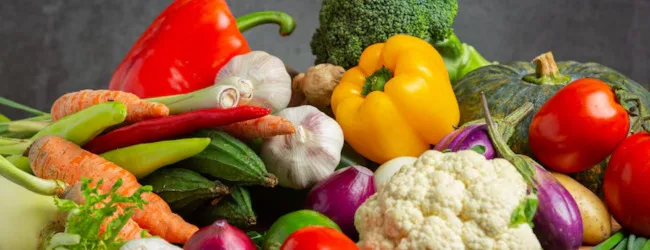
Growing non-traditional or exotic vegetables that have high demand in niche markets can be very profitable.
a. Why this Idea:
- High prices due to limited supply and increasing demand from urban consumers and restaurants.
- Potential for direct marketing to high-end customers.
- Less competition compared to traditional vegetables.
b. Licenses Required:
- General agricultural cultivation license.
- For selling in organised markets or to food businesses, specific trade licenses might be required.
c. Investment Required:
- Cost of seeds or saplings of exotic vegetables (e.g., asparagus, broccoli, bell peppers, speciality lettuce).
- Greenhouse or polyhouse setup (may be required for some varieties).
- Irrigation and fertilisation systems.
- Post-harvest handling and packaging.
d. How to Sell:
- Directly to restaurants and hotels.
- Supplying to gourmet food stores and supermarkets.
- Selling through farmers’ markets and online platforms.
- Contract farming with food processing companies.
e. Any other Requirements:
- Knowledge of the specific cultivation requirements of exotic vegetables.
- Understanding of market demand and quality standards.
- Efficient supply chain management.
f. Challenges in the Idea:
- Higher initial investment for protected cultivation.
- Risk of crop failure if cultivation techniques are not precise.
- Need for effective marketing and distribution channels.
- Potential for price fluctuations based on market demand.
g. How to overcome the Challenges:
- Start with a few high-demand varieties and gradually expand.
- Invest in good-quality seeds and follow recommended cultivation practices.
- Build relationships with chefs and retailers to ensure a steady market.
- Explore value addition through processing or pre-packaging.
h. Example:
A farmer establishes a polyhouse to grow high-quality bell peppers (red, yellow, orange). They directly supply these to local restaurants and hotels that require consistent quality and colour for their dishes, building a strong and profitable relationship.
6. Floriculture (Growing Flowers)

The demand for fresh flowers for various occasions and decorative purposes makes floriculture a promising and profitable venture.
a. Why this Idea:
- Consistent demand throughout the year for weddings, festivals, and events.
- Potential for high returns per unit area.
- Opportunity for value addition through bouquets and floral arrangements.
b. Licenses Required:
- General agricultural cultivation license.
- For selling in markets or establishing a flower shop, relevant trade licenses are needed.
c. Investment Required:
- Cost of flower seeds or saplings (e.g., roses, carnations, orchids, gerbera).
- Greenhouse or shade net setup (depending on the flower variety).
- Irrigation and climate control systems.
- Post-harvest handling, grading, and packaging.
d. How to Sell:
- Supplying to florists and event management companies.
- Selling directly to consumers through your own flower shop or online platform.
- Participating in flower markets.
- Contract farming with exporters.
e. Any other Requirements:
- Knowledge of specific flower cultivation practices.
- Understanding of market preferences and seasonal demand.
- Efficient post-harvest management to maintain freshness.
f. Challenges in the Idea:
- Susceptibility to pests and diseases.
- Need for controlled environmental conditions for optimal growth.
- Perishable nature of flowers requires efficient logistics.
- Competition from established flower markets.
g. How to overcome the Challenges:
- Implement integrated pest and disease management strategies.
- Invest in appropriate greenhouse technology.
- Establish efficient harvesting and transportation systems.
- Focus on unique flower varieties or value-added services like customised bouquets.
h. Example:
A farmer cultivates a variety of exotic orchids in a controlled greenhouse. They establish a partnership with local event planners and decorators, providing them with unique and high-quality orchids for their events, commanding premium prices.
7. Organic Fruits and Vegetables
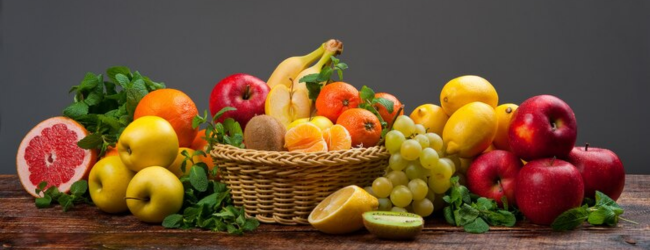
With increasing health consciousness, the demand for organically grown fruits and vegetables is steadily rising, leading to higher market prices.
a. Why this Idea:
- Premium prices for organic produce.
- Growing consumer awareness about health and environmental benefits.
- Government support and subsidies for organic farming.
b. Licenses Required:
- Organic certification from recognised agencies (e.g., PGS-India, NPOP).
- General agricultural cultivation license.
- Trade licenses for selling in markets.
c. Investment Required:
- Cost of organic seeds and inputs (bio-fertilisers, biopesticides).
- Land preparation and soil enrichment.
- Water management systems.
- Certification costs.
d. How to Sell:
- Directly to health-conscious consumers through farmers’ markets and organic stores.
- Supplying to supermarkets and online grocery platforms with an organic produce section.
- Establishing your own organic farm store.
e. Any other Requirements:
- Adherence to organic farming practices.
- Maintaining records for certification.
- Building trust and transparency with consumers.
f. Challenges in the Idea:
- Lower initial yields compared to conventional farming.
- Longer time to achieve organic certification.
- Need for specialised knowledge in organic farming techniques.
- Potential for pest and disease outbreaks if not managed properly.
g. How to overcome the Challenges:
- Seek guidance from organic farming experts.
- Adopt integrated pest and nutrient management practices.
- Focus on building soil health over time.
- Educate consumers about the benefits of organic produce.
h. Example:
A farmer converts their land to organic farming and cultivates a variety of seasonal fruits and vegetables. They establish a direct-to-consumer model by selling through a weekly farmers’ market and a subscription box service, emphasising the freshness and health benefits of their certified organic produce.
ALSO READ | Top 7 Farming Business Ideas That Will Boom in India by 2025
8. Spices

India is the “Land of Spices,” and cultivating a variety of spices like cardamom, cloves, cinnamon, and nutmeg can be highly profitable due to their high demand both domestically and internationally.
a. Why this Idea:
- Consistent demand in culinary and medicinal applications.
- High value per unit weight for certain spices.
- Potential for export.
b. Licenses Required:
- General agricultural cultivation license.
- For exporting spices, specific export licenses are necessary.
- Grading and quality certifications may be required for certain markets.
c. Investment Required:
- Cost of quality seedlings or saplings.
- Plantation and maintenance costs (which can vary depending on the spice).
- Processing and drying infrastructure.
- Packaging and storage.
d. How to Sell:
- Supplying to spice traders and wholesalers.
- Selling to food processing companies and condiment manufacturers.
- Exporting to international spice markets.
- Establishing your own brand of packaged spices.
e. Any other Requirements:
- Specific climatic and soil conditions for different spices.
- Knowledge of cultivation and post-harvest processing techniques.
- Quality control measures to meet market standards.
f. Challenges in the Idea:
- Long gestation period for some spice crops (e.g., tree spices).
- Susceptibility to pests and diseases.
- Fluctuations in market prices.
- Competition from other spice-producing regions.
g. How to overcome the Challenges:
- Choose spices suitable for your local climate.
- Implement integrated pest and disease management.
- Explore value addition through processing and branding.
- Form FPOs to improve marketing and bargaining power.
h. Example:
A farmer in a suitable hilly region cultivates high-quality cardamom. They invest in proper drying and grading facilities and then sell their produce to both local spice traders and directly to a national brand of tea, ensuring a stable and profitable market.
9. Dates Farming
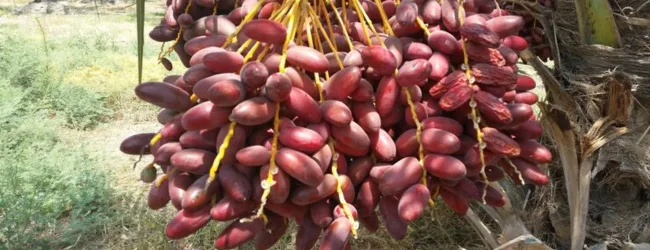
Date palm cultivation is gaining popularity in India, especially in arid and semi-arid regions, offering good returns due to the increasing demand for dates.
a. Why this Idea:
- High nutritional value and increasing consumption.
- Relatively low water requirement compared to some other fruit crops.
- Long shelf life of dates.
b. Licenses Required:
- General agricultural cultivation license.
- For setting up processing units or exporting, specific licenses might be required.
c. Investment Required:
- Cost of quality date palm saplings.
- Plantation and initial irrigation setup.
- Maintenance and pest control.
- Harvesting and processing costs (grading, packaging).
d. How to Sell:
- Directly to consumers during harvest season.
- Supplying to dry fruit wholesalers and retailers.
- Selling to food processing companies (for date syrup, etc.).
- Exporting to countries with high data consumption.
e. Any other Requirements:
- Suitable arid or semi-arid climate.
- Knowledge of date palm cultivation and pollination techniques.
- Proper post-harvest handling and storage.
f. Challenges in the Idea:
- Long gestation period before the first significant harvest (3-5 years).
- Susceptibility to certain pests and diseases.
- Need for knowledge about pollination and fruit management.
- Competition from imported dates.
g. How to overcome the Challenges:
- Select high-yielding and disease-resistant varieties.
- Implement proper irrigation and pest management strategies.
- Learn about artificial pollination techniques to ensure good fruit set.
- Focus on producing high-quality, unique varieties to compete with imports.
h. Example:
A farmer in a dry region establishes a date palm orchard with a focus on a premium, soft variety. They invest in attractive packaging and sell their dates directly to consumers through local markets and online, emphasising their freshness and unique taste compared to commercially available dates.
10. Turmeric Farming (Speciality Varieties)
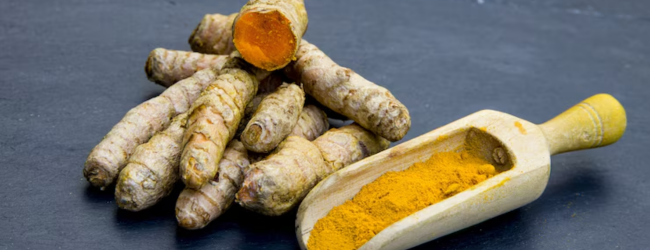
While common turmeric cultivation is prevalent, focusing on speciality varieties with higher curcumin content or unique properties can fetch better prices.
a. Why this Idea:
- Increasing demand for high-quality turmeric in the health and wellness sector.
- Potential for value addition through processing and extraction of curcumin.
- Growing interest in traditional and organic turmeric varieties.
b. Licenses Required:
- General agricultural cultivation license.
- For processing and selling turmeric powder or extracts, food safety licenses are required.
- Organic certification if opting for organic farming.
c. Investment Required:
- Cost of high-quality rhizomes of speciality turmeric varieties.
- Land preparation and organic inputs (if applicable).
- Irrigation and drainage systems.
- Processing equipment (for powdering or extraction).
d. How to Sell:
- Supplying raw turmeric to spice traders and processors.
- Selling processed turmeric powder and extracts directly to consumers or through online platforms.
- Supplying to Ayurvedic medicine manufacturers and health food companies.
- Exporting speciality turmeric varieties.
e. Any other Requirements:
- Knowledge about the specific cultivation practices of speciality turmeric varieties.
- Understanding of curcumin content and quality standards.
- Proper post-harvest processing and storage to maintain quality.
f. Challenges in the Idea:
- Identifying and sourcing genuine speciality turmeric rhizomes.
- Ensuring high curcumin content through proper cultivation practices.
- Competition from established turmeric producers.
- Risk of adulteration in the market.
g. How to overcome the Challenges:
- Source rhizomes from reputable suppliers and research institutions.
- Adopt scientific cultivation practices to maximise curcumin content.
- Focus on quality control and build a brand based on purity and high curcumin levels.
- Explore niche markets like organic or single-origin speciality turmeric.
h. Example:
A farmer cultivates a speciality turmeric variety known for its exceptionally high curcumin content using organic farming methods. They establish a small processing unit to produce high-quality turmeric powder and curcumin extracts, which they sell online and to health food stores, emphasising the superior health benefits of their product.
ALSO READ | Pineapple Farming in India: A Comprehensive Guide [Setup Cost, Profit & More]
Need Expert Guidance?
Starting a business can be challenging, but you don’t have to do it alone! At Boss Wallah, our 2,000+ business experts are ready to provide valuable insights and guidance. Whether you need help with marketing, finance, sourcing, or any other area of any business, our business experts are here to help you succeed- https://bw1.in/1116
Confused about Which Business to Start?
Want to start your own business but unsure which one to choose? Explore Boss Wallah, where you’ll find 500+ courses by successful business owners, featuring practical, step-by-step guides on starting and growing various businesses.
Find your perfect business idea today – https://bw1.in/1111
Conclusion
Choosing the right crop is crucial for maximising profitability in farming. The 10 crops listed above present significant opportunities for Indian farmers in 2025 due to their high market demand, potential for value addition, and favourable market trends. However, success depends on thorough planning, understanding market dynamics, adopting best agricultural practices, and effective marketing strategies. By carefully considering the investment, required knowledge, and potential challenges for each crop, farmers can make informed decisions and cultivate a prosperous future.
Frequently Asked Questions (FAQs)
- Which is the most profitable farming crop in India? While it varies based on market conditions and specific regions, crops like saffron, vanilla, and certain medicinal herbs generally offer the highest profit margins per unit area.
- What factors should I consider when choosing a profitable farming crop? Consider market demand, your local climate and soil conditions, investment capacity, required knowledge and skills, availability of resources (water, labour), and potential risks and challenges.
- Is organic farming more profitable in the long run? Yes, organic farming can be more profitable in the long run due to premium prices, reduced input costs (no chemical fertilisers or pesticides), and improved soil health leading to sustainable yields. However, it requires initial investment in certification and a learning curve.
- How can I sell my farm produce for maximum profit? Explore direct-to-consumer sales (farmers’ markets, online platforms), build relationships with restaurants and retailers, consider value addition through processing and packaging, and explore export opportunities if applicable.
- What are the common challenges faced in profitable farming? Common challenges include market price fluctuations, pest and disease outbreaks, climate variability, high input costs, lack of access to proper market information, and supply chain issues.
- How can farmers overcome the challenges in profitable farming? Farmers can overcome challenges by adopting sustainable farming practices, diversifying crops, investing in technology and infrastructure, forming farmer-producer organisations (FPOs), and staying informed about market trends and government schemes.
- Do I need specific licenses to cultivate and sell profitable crops in India? Yes, you generally need a basic agricultural cultivation license from your state. Depending on the crop and how you sell it (e.g., processing, exporting), additional licenses related to food safety, trade, or exports might be required.
- What is the role of government schemes in promoting profitable farming? The Indian government offers various schemes related to subsidies on inputs, irrigation, organic farming promotion, market infrastructure development, and export promotion, which can significantly support profitable farming ventures. It’s advisable to research and leverage these schemes.


